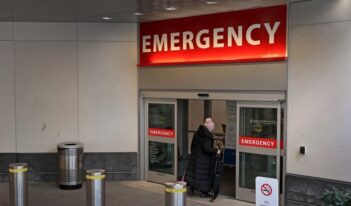
Scholar argues that COVID-19 has underscored the serious gaps in access to midwifery care.
Medicalization and the reliance on hospitals for childbirth-related care took on an added risk during COVID-19—bringing healthy pregnant people into proximity with a high concentration of individuals exposed to or infected with COVID-19.
In a recent article, Elizabeth Kukura, a law professor at Drexel Kline School of Law, argues that during the COVID-19 pandemic, legal restrictions impeded both the growth of midwifery and access to alternatives to hospital-based births. Because of current legal obstacles, midwives could not meet the demand, insists Kukura.
The emergence of COVID-19 left public health authorities scrambling to understand how the coronavirus spreads and affects infected individuals. These problems were especially acute in the maternity care context, where efforts to understand how COVID-19 affected parents and babies was “agonizingly slow,” notes Kukura. In response to the unknown, hospitals implemented restrictive policies to limit COVID-19 exposure for pregnant people.
Because of these restrictive policies and fear of contracting COVID-19, an increased number of pregnant people turned to alternatives to hospitalization, contends Kukura. Many of them sought midwifery care.
But, as Kakura explains, many pregnant people who pursue midwifery care discover that the supply of local midwives does not meet demand. Kukura argues that lack of licensure for midwives in many states, restricted autonomy for midwives, and regulatory hurdles for freestanding birth centers contribute to the undersupply of community birth options across the United States.
Midwifery practice focuses on holistic and individualized care. Pregnant people may be attracted to midwifery care because of the reputation that midwives provide more individualized care and fewer interventions, the desire to avoid hospital settings, or distrust of medical providers due to previous mistreatment. Medical experts advise that it can be appropriate for those experiencing low-risk pregnancies.
Kukura focuses on three different types of midwives, each distinguished by credential and licensing status.
One type, certified nurse midwives, receives training as registered nurses before pursuing specialized midwifery training. Certified nurse midwives predominantly practice in hospitals, and their work is covered by insurance. They are licensed in all 50 states.
In contrast to certified nurse midwives, direct-entry midwives enter the profession without formal nursing training, and they primarily work in birth centers and in the homes of people who give birth, explains Kukura. The term direct-entry midwives encompasses both certified professional midwives and certified midwives. Certified professional midwives can obtain licensure in 36 states and are eligible for licensure in six states. Certified Midwives have a background in a health-related field and are trained to attend births. Certified Midwives are eligible for licensure in nine states.
In states that do not offer licenses from the relevant state agency, direct-entry midwives are discouraged from training and practicing.
Without licensure available in some states, there will continue to be an undersupply of midwives, argues Kukura. Unlicensed midwives who practice in those states are vulnerable to legal action because they are neither covered by insurance nor recognized by the state. Kukura urges policymakers to prioritize midwifery promotion in the form of licensure. She advocates that states should forge a path free of restrictions to licensure for all credentialed midwives.
In addition, some states require licensed midwives to enter into a collaborative agreement with a supervising physician. Depending on where they work and the degree of acceptance and cooperation that exists with area physicians, collaborative agreements may preclude midwives from practicing to the full extent of their training. Kukura argues that this certification should be eliminated because its requirements present an insurmountable hurdle for many midwives.
Access to midwifery care is also inhibited by regulatory barriers to establishing more freestanding birth centers. Freestanding birth centers, usually owned and operated by midwives, offer a middle ground between hospital and home birth. Lack of licensure in certain states, onerous certificate of need requirements, and other regulations create obstacles that prevent midwives from establishing these centers.
Nine states do not offer any type of license for a freestanding birth center. Although freestanding birth centers may still operate without a license, they are unregulated and are not eligible for insurance coverage, including Medicaid.
Kukura argues that state lawmakers should act to encourage the development of more freestanding birth centers and enable birth center licensure. Authorizing licensure in each state will increase access to community birth and permit insurance reimbursement, explains Kukura.
In addition, some states require a certificate of need for the construction of a new birth center, which involves an expensive and time-consuming process. This process is particularly burdensome for birth centers, which are small businesses or non-profits, notes Kukura. She urges states to repeal their certificate of need requirement. She argues that this requirement impedes the creation of new freestanding birth centers without benefiting public health and safety.
Although COVID-19 exacerbated the serious gaps in access to midwifery care across the United States, these gaps to access are not new. Kukura concludes that, to make childbirth safer, policymakers must expand access to community birth by reforming restrictive regulations on midwifery practice and freestanding birth centers. Otherwise, pregnant people seeking alternatives to hospital-based care will be left without access to a midwife.



